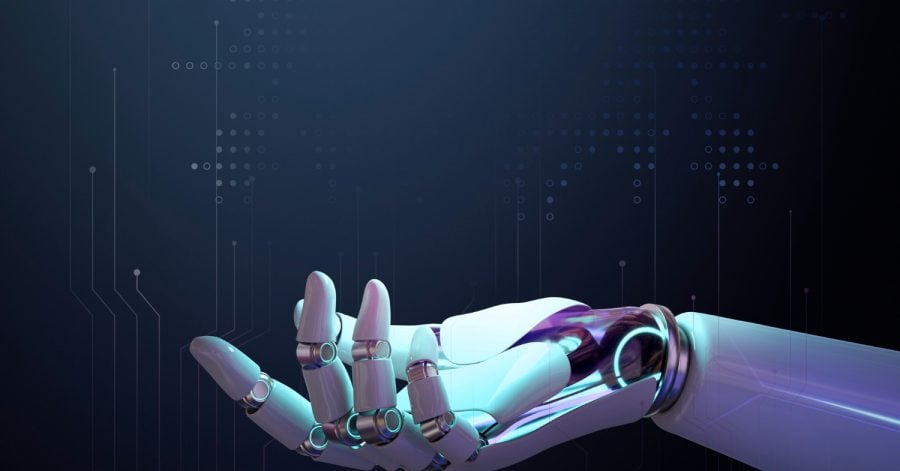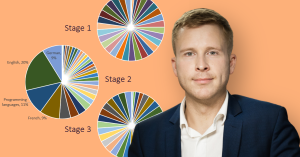For the last decade artificial intelligence (AI) has been continuously transforming the way we live and work – from voice-controlled virtual assistants to image recognition systems, this technology is progressively making its way into our daily lives. now a part of our daily lives and becomes inevitable.
In industries such as healthcare, finance, and transportation, AI is already revolutionizing the way things are done, and as the technology continues to evolve we can expect to see it play an even greater role with the potential to improve efficiency, accuracy, decision-making processes.
In this article we present six top trends in AI in 2023 and what they mean for the future, with real-life examples and expert insights.
6 Trends in AI in 2023
Generative AI
This trend involves creating new content or data based on patterns and information learned from existing data. In 2023, we can expect to see a growing interest in generative AI, as it has the potential to greatly impact a wide range of industries, from art and design to manufacturing, and beyond.
Language models such as ChatGPT and GPT-3 have been triggering attention and debates, due to their ability to generate human-like text and perform various language tasks such as text summarization, question-answering, and translation.
And while ChatGPT especially is literally everywhere around us, experts are hopeful that it will inspire more similar products and services.
“Generative AI will start permeating more and more of the products we use on a daily basis. The most significant player here will be Microsoft, whose massive partnership with OpenAI will enable them to integrate large language models into their products. OpenAI will make significant improvements in mitigating some of their language models’ biggest warts, such as factual accuracy,” Marin Smiljanic, founder and CEO of AI-powered search engine tool Omnisearch, tells The Recursive.
Moreover, regional startups such as Codewell AI are already creating digital assistants that can speak any language on a human level, and the trend is set to continue even more in the upcoming period.
Edge AI and the Internet of Things (IoT)
The integration of AI with IoT devices will continue to increase, with AI being used to process data at the edge of networks, where it can analyze and act on information in real-time without having to rely on a cloud or central server.
IoT devices can collect large amounts of data from their surroundings, but without AI, it is often difficult to make sense of this data and extract valuable insights. By integrating AI technologies, such as machine learning and deep learning into IoT devices, this data can be analyzed in real-time to make predictions, automate processes, and improve decision making.
In practical applications, AI and IoT integration can result in smart homes, smart cities, and industrial IoT solutions that are more efficient, cost-effective, and intelligent.
For example, AI algorithms can analyze data collected from IoT devices such as sensors and cameras to detect anomalies, prevent equipment failures, and optimize energy usage. In the healthcare industry, AI and IoT can be integrated to monitor patients’ health and predict potential issues before they become serious.
Advancements in computer vision
AI algorithms will continue to improve in their ability to interpret and analyze visual information, leading to greater use of computer vision in industries such as retail, healthcare, and transportation.
Now, AI has the potential to make even more advancements in computer vision by being integrated with other technologies, such as robotics, AR/VR, and sensor networks. This integration can lead to new and innovative applications that can take advantage of the strengths of both technologies.
Overall, AI has the potential to continue to make significant advancements in the field of computer vision by incorporating new algorithms, hardware, and data to build more sophisticated and capable systems.
Natural Language Processing (NLP) and conversational AI
NLP technology will continue to advance, allowing for more sophisticated and human-like interactions with AI-powered chatbots and virtual assistants.
While NLP models have already shown the ability to generate language, there is still room for improvement in terms of the coherence and naturalness of the generated text. Further development in this area could lead to more sophisticated and capable language generation models.
Additionally, NLP models are primarily trained on a limited number of languages, with a focus on English. However, by expanding the coverage of NLP models to more languages and local dialects, NLP models can be more effective in serving a wider range of users.
When it comes to conversational AI models, most are limited in their ability to hold human-like conversations. Further development in this area could lead to more sophisticated and capable conversational AI models that can have more natural and engaging interactions with users.
AI and blockchain
The combination of AI and blockchain technology will offer new possibilities for secure, decentralized data processing and analysis.
Decentralized AI is one of the top upcoming trends, as blockchain technology can be used to create decentralized AI systems, where data and computing power are distributed across a network of nodes, rather than being centralized in a single entity. In turn, could lead to more secure and privacy-preserving AI systems.
Then, there is secure data sharing, as AI algorithms often require large amounts of data to be trained effectively. Blockchain technology can be used to create secure data sharing mechanisms that allow data to be shared between different entities, while preserving the privacy and security of the data.
“On the macro level, we will see more advanced implementations between blockchain and artificial intelligence, to help keep track with the rapid development of AI solutions that is happening right now. Using blockchain to store and distribute AI models will provide an advanced audit trail and enhance data security for AI development,” Vali Malinoiu, Head of Blockchain at Humans.ai, tells The Recursive.
AI in new industries
AI will continue to expand into new industries, such as healthcare, energy, agriculture, and logistics, improving efficiency and decision-making processes.
In healthcare, AI can be used for tasks such as diagnosis, treatment planning, drug discovery, and image analysis. By using AI, healthcare professionals can make more accurate diagnoses, and treatments can be tailored more effectively to individual patients.
Another example is the finance industry, where AI is being used for tasks such as fraud detection, risk assessment, and portfolio optimization. By using AI, financial institutions can improve their risk management and make more informed decisions.
When it comes to industries such as agriculture, AI is being used in agriculture for tasks such as precision farming, yield prediction, livestock management and soil analysis. By using this technology, farmers can improve their crop yields, reduce waste, improve the welfare of their livestock and have many more benefits.
And the trends won’t stop here – as AI will bring a lot more progress, experts are adamant.
“I also expect to see some worthwhile research results on deep learning model architecture. For instance transformers, the current state of the art model architecture, perform significantly better than vanilla recurrent neural networks, which were previously state-of-the-art. There’s really no reason to believe that the transformer architecture is the end of history,” Smiljanic concludes.
Interested to share your comments and opinions on even more top AI trends for 2023? Drop us a line at [email protected]








